Branding
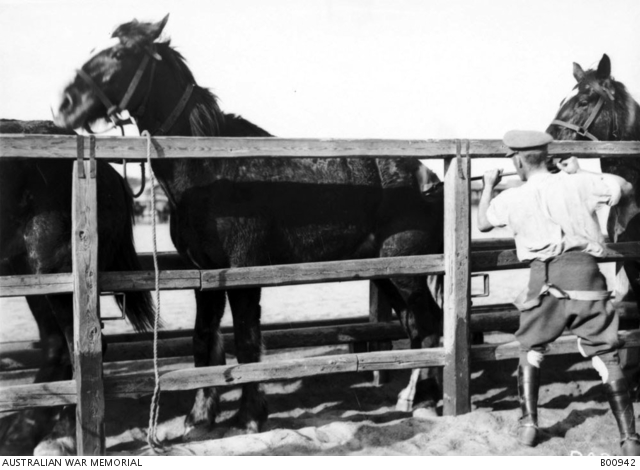
Waler Data Base @ Facebook. Image: Branding a horse with the Broad Arrow army brand, 1914 at No1 Remount Depot, AWM.
The Australian government brand was and is the broad arrow. It is still used on some army equipment. Horses were branded with this if they were bred on government farms or bought at sales etc, and had no station or dealer brand to ID the horse – so – not all were branded with the broad arrow.
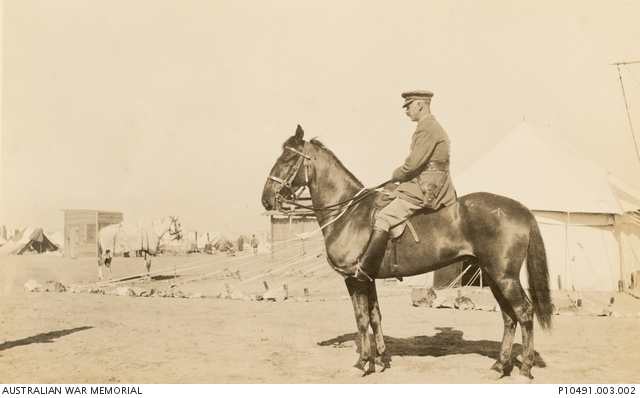
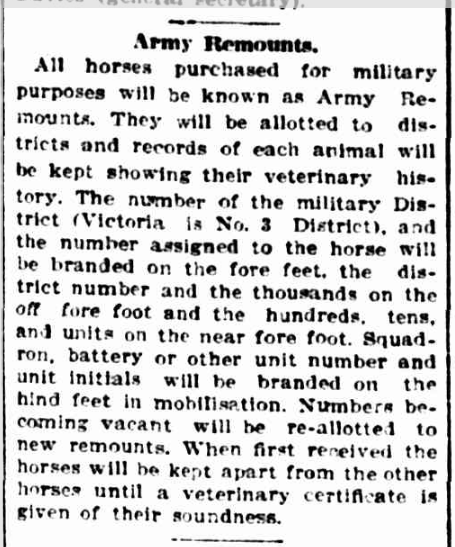
Image: The Herald, Victoria, Wednesday 3 April 1912.
Horses leaving Australia had to be branded for ID for quarantine. If no station brand, then dealers put their brand on horses they bought or bred – these were by far the most common, including with remounts our army bought in times of war.
Policies changed regularly, and from what I can find, the majority of remounts had private brands on. It’s not an easy subject to research, and there are almost no photos.
Needless to say soldiers resented their clothes and horses being branded with the broad arrow, once associated with convicts (being government property as prisoners and slaves). There was a bit of a furore at WW1 time about it.
Horses sent to India and bought by the British army there were again branded – with the British army brand (not sure what that was ) – on the hoof, on arrival, then the horses sent to whichever area needed them. Thousands a year from Australia. By the time they arrived up country and were settled in, the hoof brand was growing out, to no longer disfigure it or give the tarnish of a government brand which devalued them (something our government never grasped). They had their hide brand and army description to ID them.
A hoof brand was only temporary, but on arrival at the remount depot the horse was sent to, it had information such as bought by the government (government brand, usually broad arrow also used by Britain as it was their brand originally in the case of horses in India) and numbers and letters – indicating who bought the horse, its’ record number etc. So it was like sending the horse with an ID file, without causing it pain or permanent disfiguring. Many countries did it with remounts, before sending them off. Say one proved unsound or aged, they could identify who bought it etc. Also, until in the new depot/ regiment, it could not be said to be stolen as it had the government brand.
This is the simple crown brand used by the government in the C19th in Australia. Any horse purchased or acquired by the government – not necessarily for the military- was branded on the front hoof. The government inspector held and applied the brand.
Image & content supplied by Richard Crispin.
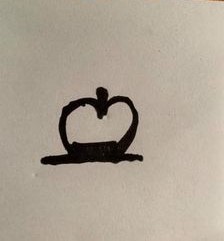
Hot branding is not very painful at all but it is a skilled job. Applied too lightly, only the hair burns – it soon grows back and there is no brand. Applied very hard and for too long, terrible scarring for life occurs, and much trouble healing, with recurring problems on the scar site. Properly done, as normal practice, the branding iron is made hot, then applied to the hide with gentle pressure. As soon as the horse moves the branding iron is lifted off – it only takes a couple of seconds usually. Only the outside skin layer is burned and soon heals.
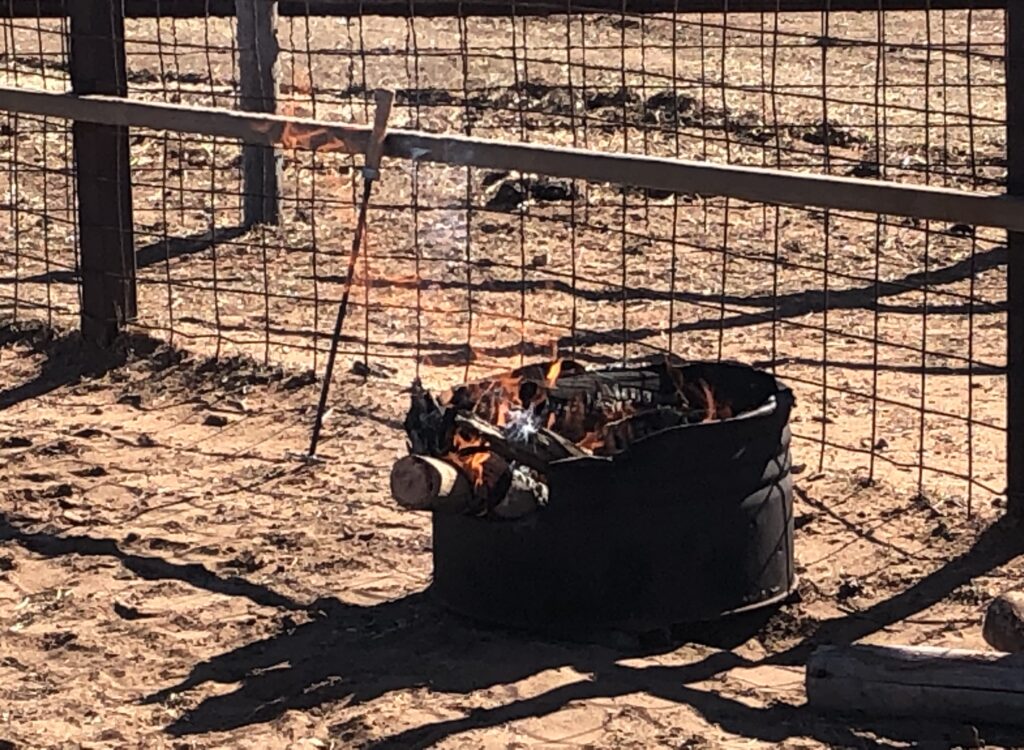
Anyone who has observed this, and also observed freeze branding, where freeze burn occurs for a time, knows which is best – I’d choose fire branding any day of the week. Many prefer freeze branding – it’s all up to the individual. There were no microchips back in WW1 (and some would also say that is cruel) and it was crucial to be able to identify the horses, as it still is today with agricultural stock (and pets in order to reunite lost pets with owners).
A list of registered brands can readily be found on the internet, check out this link to see the brands registered in the Northern Territory for example. Other states can also be googled. South Australia no longer have requirements for brands to be registered and haven’t for a number of years. Their previous registered brands have been archived and cannot be accessed unfortunately.
Sometimes we get asked about possible Walers of unknown origin and it is always a thrill to be able to match them to a station, such as the rescued Newhaven Walers some of which were branded with Alex Coppock’s personal brand rather than the ‘ACT’ station brand (‘AC’ as in photos below on Fisher, Rigoletto and Pearl).
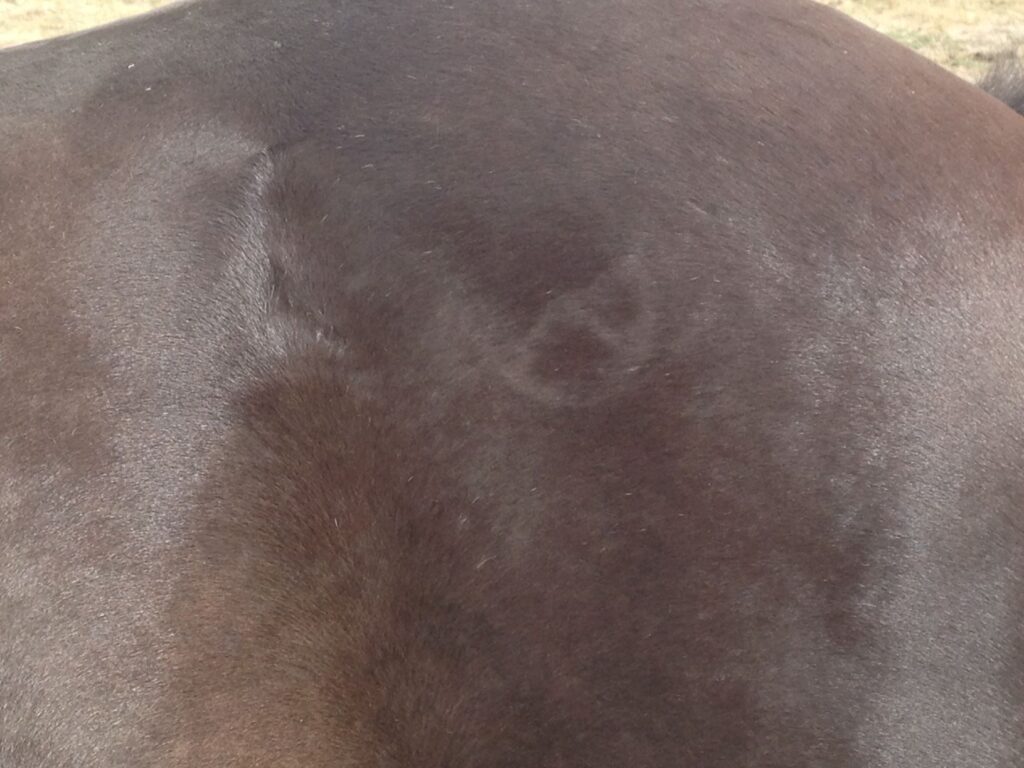
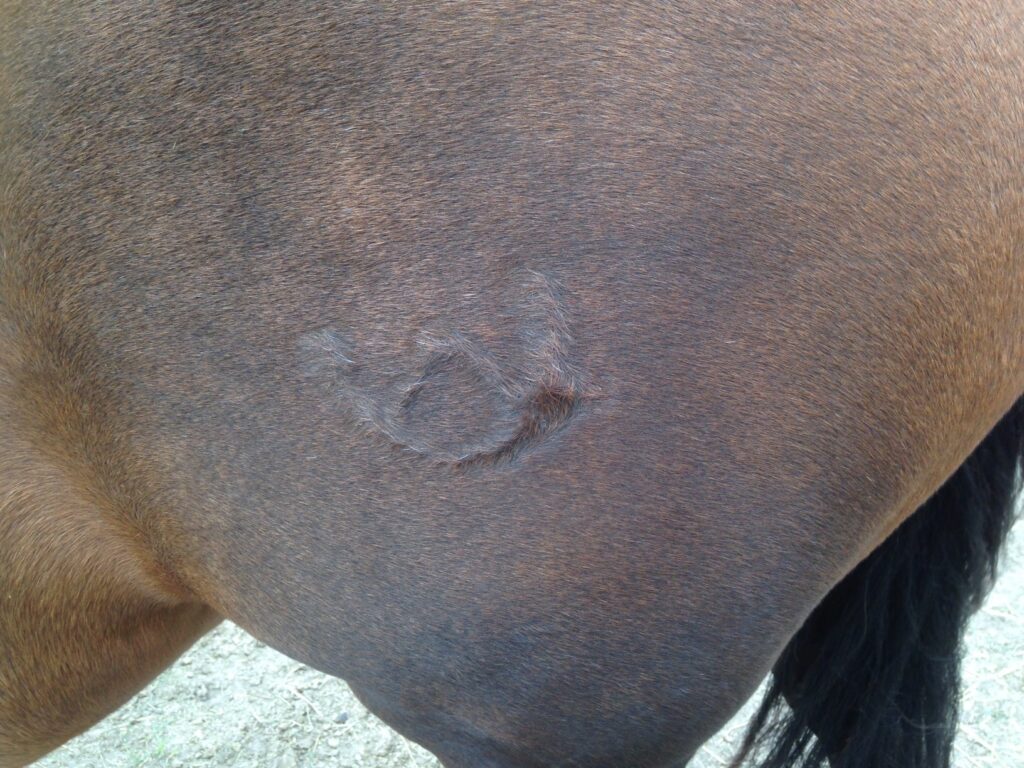
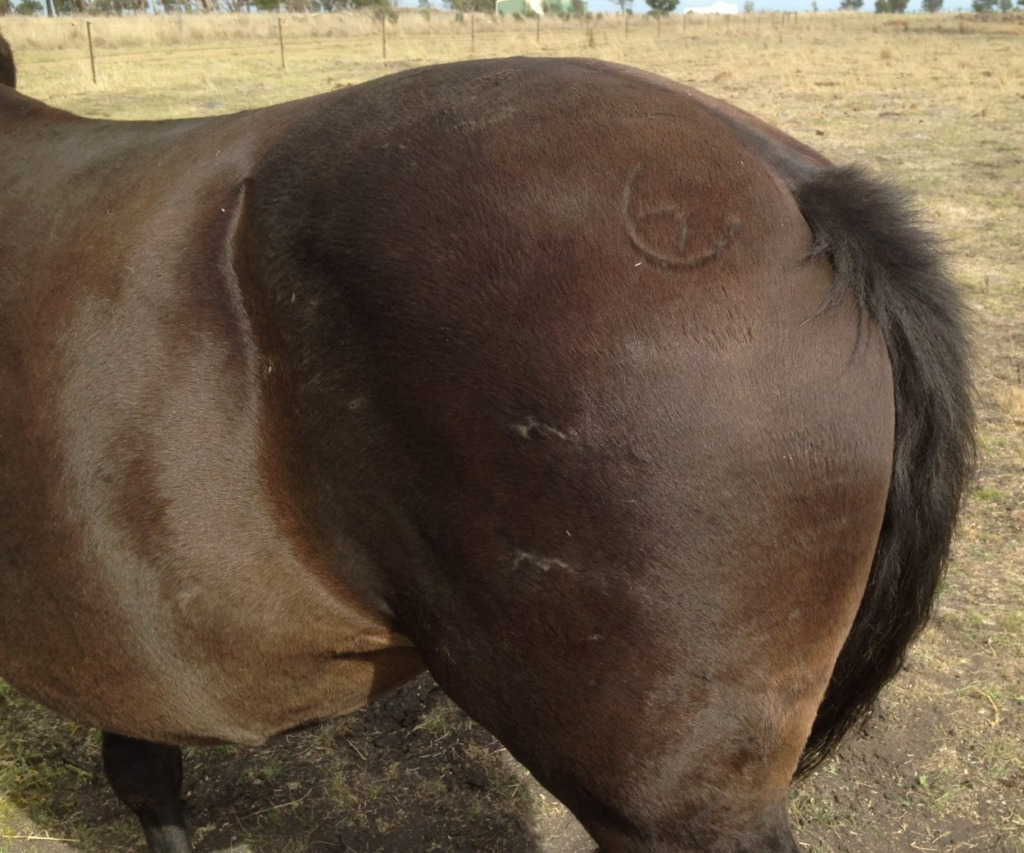
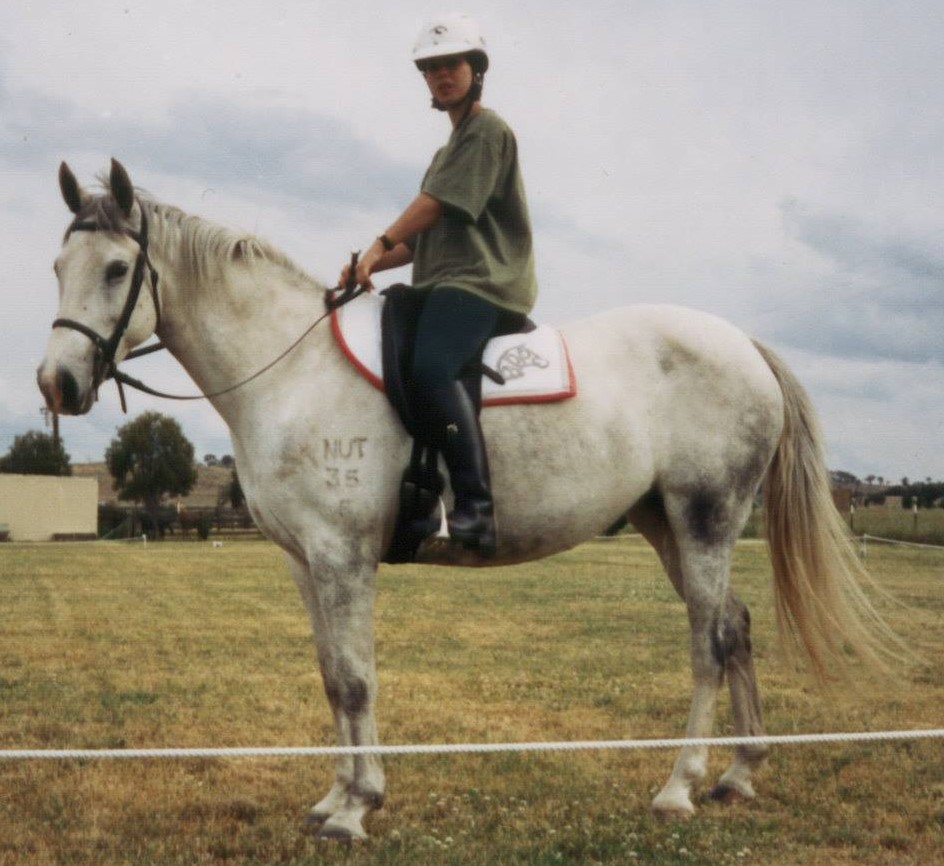
Many think branding is cruel but only the outside layer of skin is burned, say you do a horse, you’re done when it feels it. Freeze banding has an equal level of pain (as one who’s had sun cancers burned off can attest), not much difference at all, and fire branding is faster.
Yes, there is the stress for the animal of being caught and thrown, however it took a matter of minutes and was over. Many stockmen could do a beast in less than a minute.
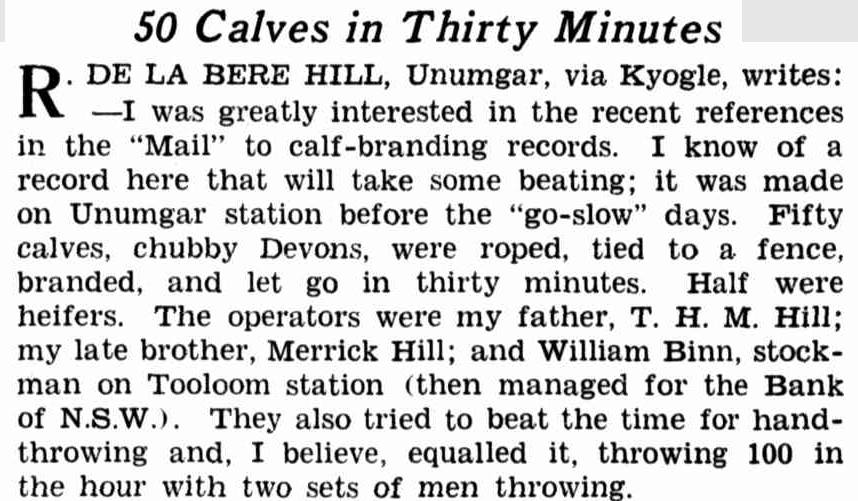
Here are a few branding methods for those interested.
1. Using a horse to rope a beast for branding – now called bronc branding – and the roping horse called a bronc horse (and yes the term bronc also used for a rodeo bucking horse). We use a draught horse collar around the horse’s neck rather than a horned saddle to secure the rope.

The method of using a horse with collar to rope the beast, run rope about a post to bring the beast up. Barklay Downs, NT.
It’s said Kidman saw this method when he was in America and popularised it here around 1910, although it had already been in use in Queensland as far back as 1879.
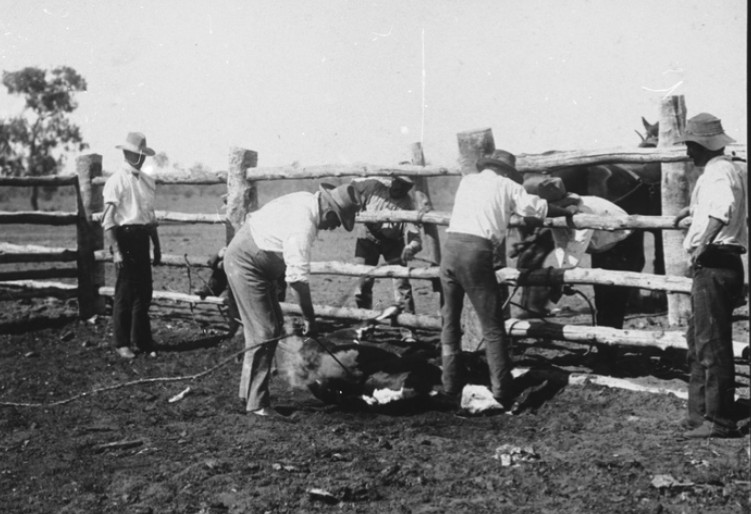
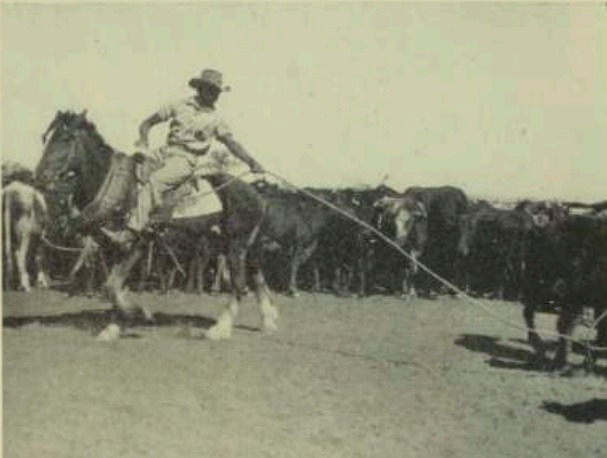
Images: Branding stock at the homestead, Todmorden, Mount. 1908. State Library S.A. The rope horse is on the other side of the yard and pulls the beast up to the fence; Bronco-ing on Rocklands, Northern Territory. The bronco horse used for pulling in the cattle to be branded.” Photo by Alan Marshall Walkabout 1st July 1951
2. Tail throwing from a horse. The rider gallops alongside the beast, grabs the beast’s tail as its hind feet leave the ground, a little yank and the beast goes over on its side, rider dismounts fast and secures the legs with a rope. Beast can be branded, tagged and marked, needless to say being not too far from the branding fire if branding needed; this was done both in the open and in yards.
It became a rodeo and show sport here too, using an animal bigger than a calf of course. Sometimes used to secure a beast while coachers are brought up, or a truck, to load it (in the case of some wild bulls).
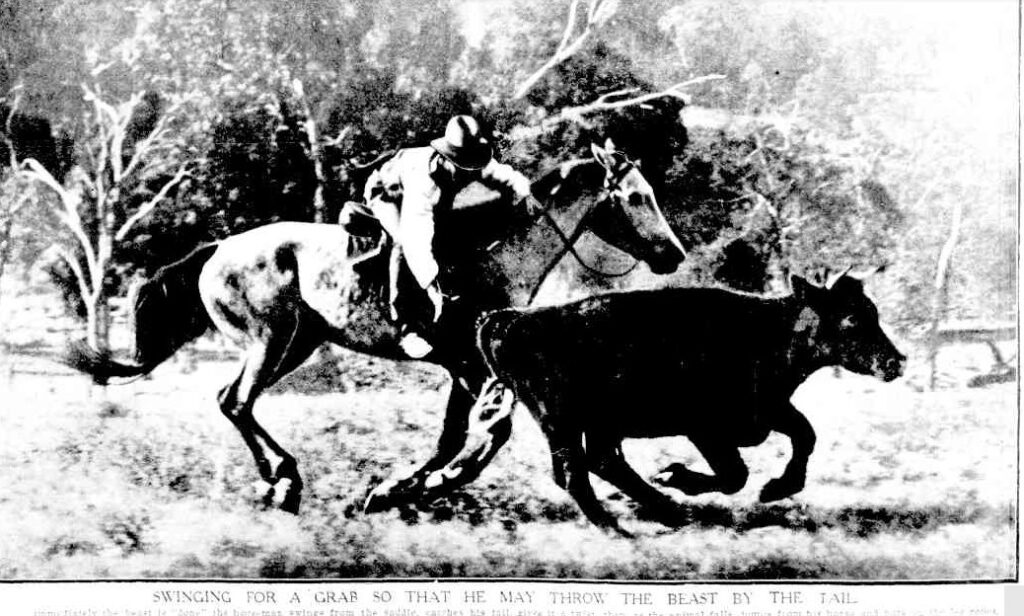
3. Throwing in the yard. A man on foot throws a beast by the tail, others are there to help, its head is held down, a hind foot held out so it can’t rise, and it’s branded, marked if a male, and ear tagged if needed; in times past many were both hide and cheek branded. This was a fast and efficient method – widely used.
Sometimes the beast is roped by the neck first and hauled to the yard fence to secure it while the tail is grabbed. There’s a real knack to throwing a beast by the tail on foot, it’s a matter of the beast being off balance so it’s easily tipped over.
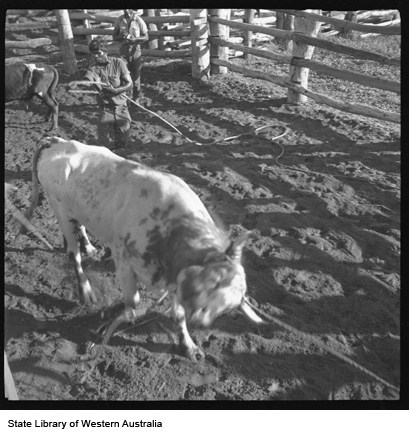
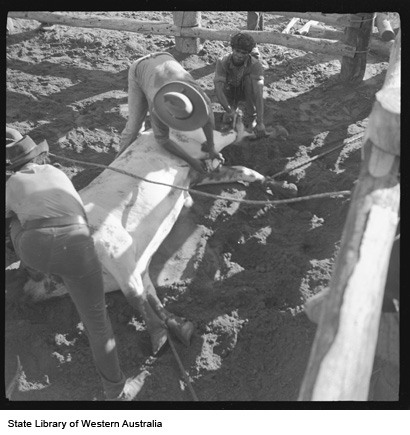
State Library of WA Images of Cattle being branded in the Kimberley.
4. Chute branding. Cattle run into a chute/race that’s fed from the yards, thus branded while standing in the chute. Some have a removable crush and the beast may be secured in that and then it’s laid down, still in the crush.
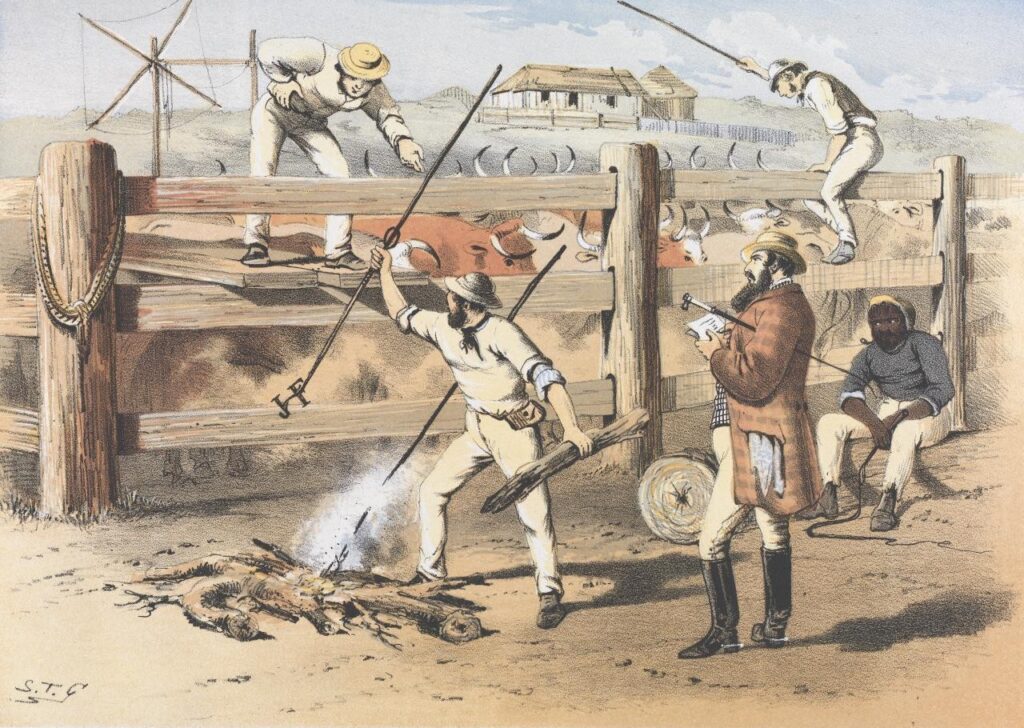
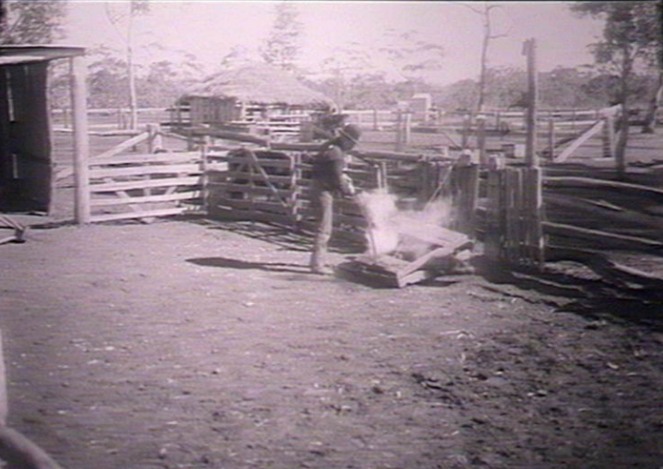
Images: Cattle Branding. 1864, lithograph by Sammy Gill. National Gallery of Victoria; Calf in Bottrell branding frame being branded. 1906. State Library NSW
5. Rope branding. Beast caught by ropes, one about the neck, another about the body which is run about its legs and pulled in, this drops the beast on its side, at least two men needed. This was often used by vets when examining sick or injured animals. Used for cattle, horses, camels.
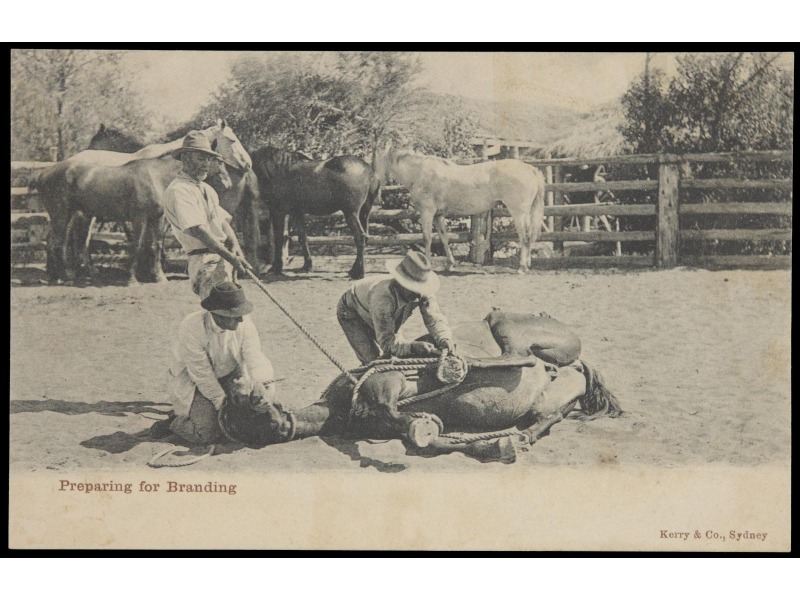
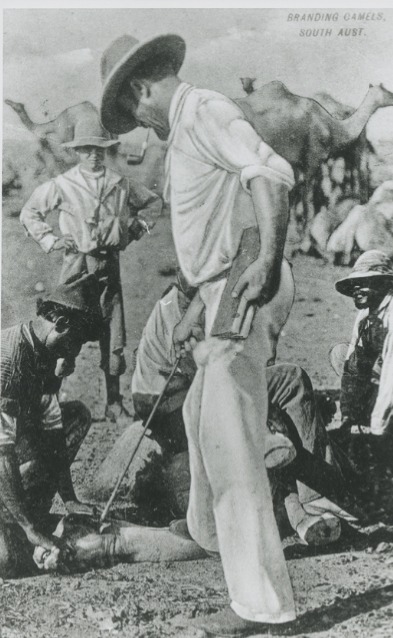
Image: Branding Camels, State Library S.A.
It does seem cruel, but the government brought in a fee for all camels a person owned, an annual fee. No brand meant no-one owned it.
The brand was also needed for ID to cross out of tick areas too, etc. Cheek branding as well as shoulder, side or flank was done on camels and cattle.
Horses usually just had one body brand, or two if their year of birth added (as 2 numbers) and the order of their birth e.g. 6 over 25.
6. There’s a gadget called a spider used sometimes on a horse to restrain the legs, and sometimes used for throwing it too (have seen it used, not my cup of tea), ditto a method of tying the legs of a beast or horse, opening side panel of a race, animal rushes out and falls when the ropes stop it, also not very safe for the animals, but people must do what they can with what they have, and sometimes a person is alone or has only one offsider.